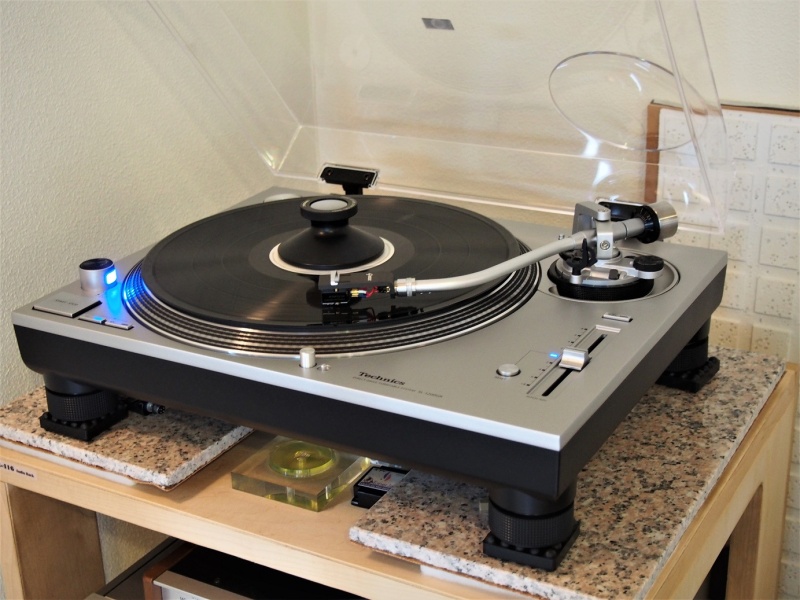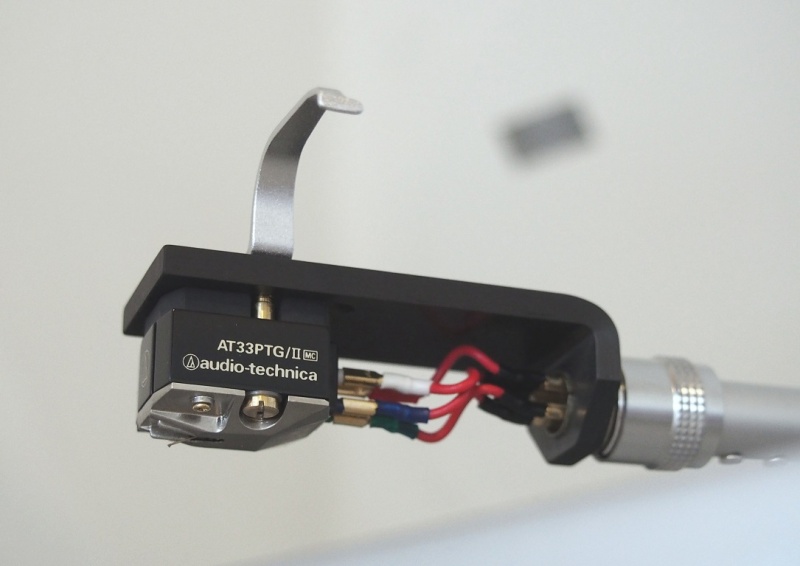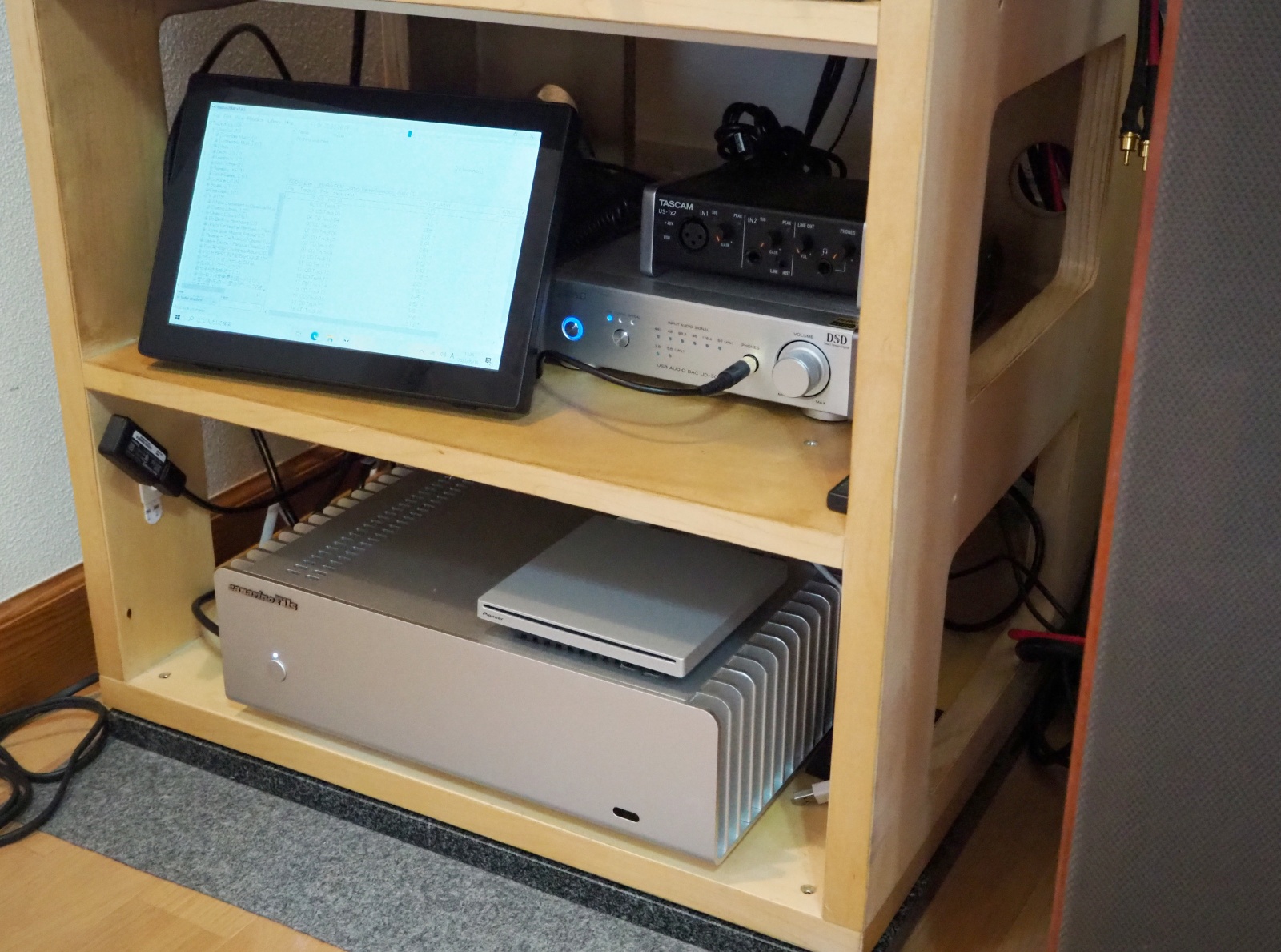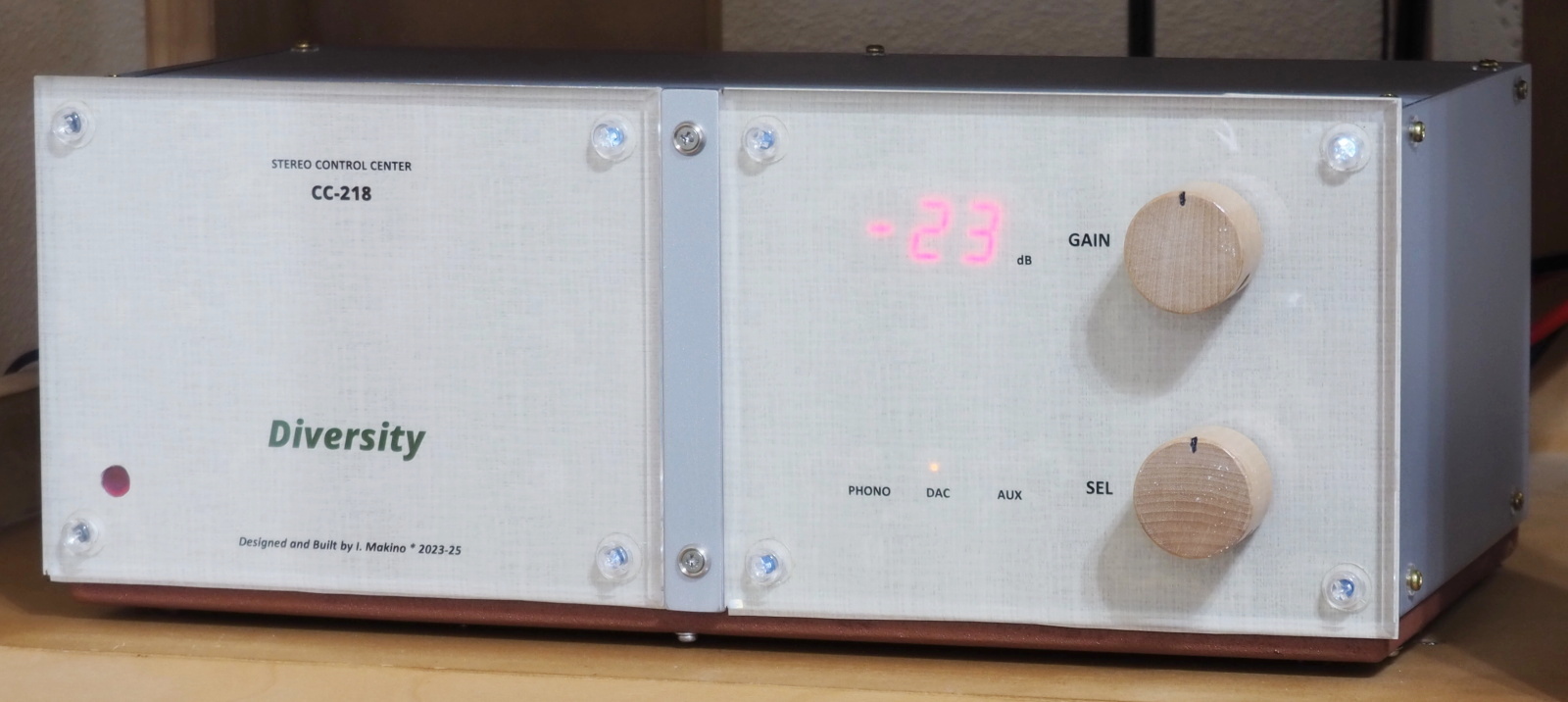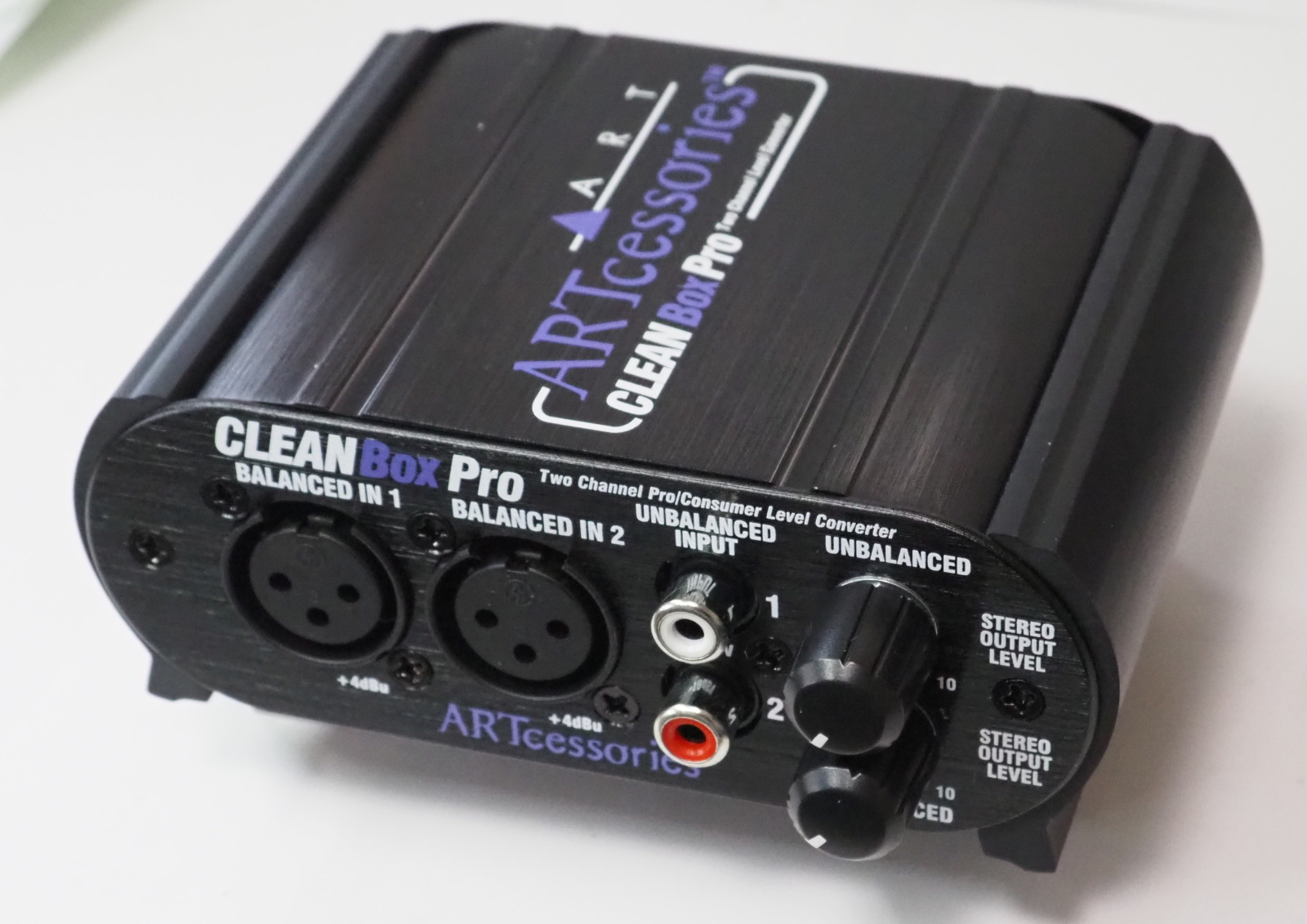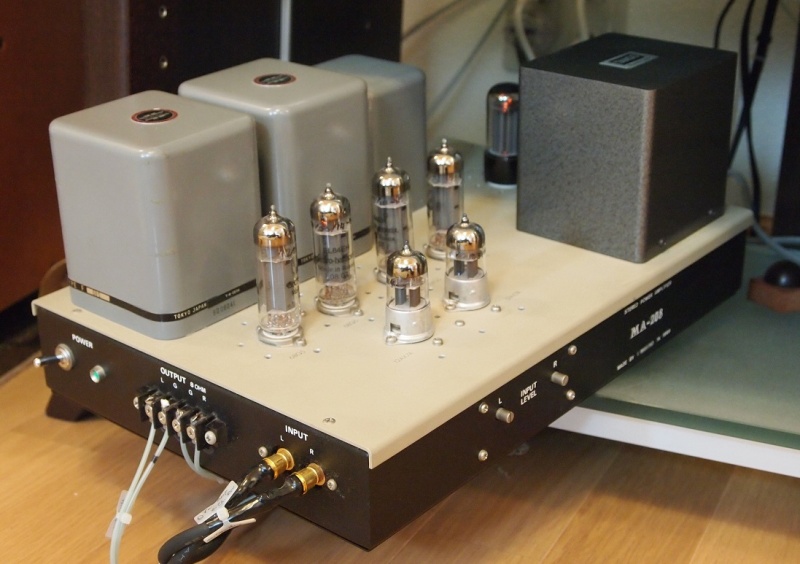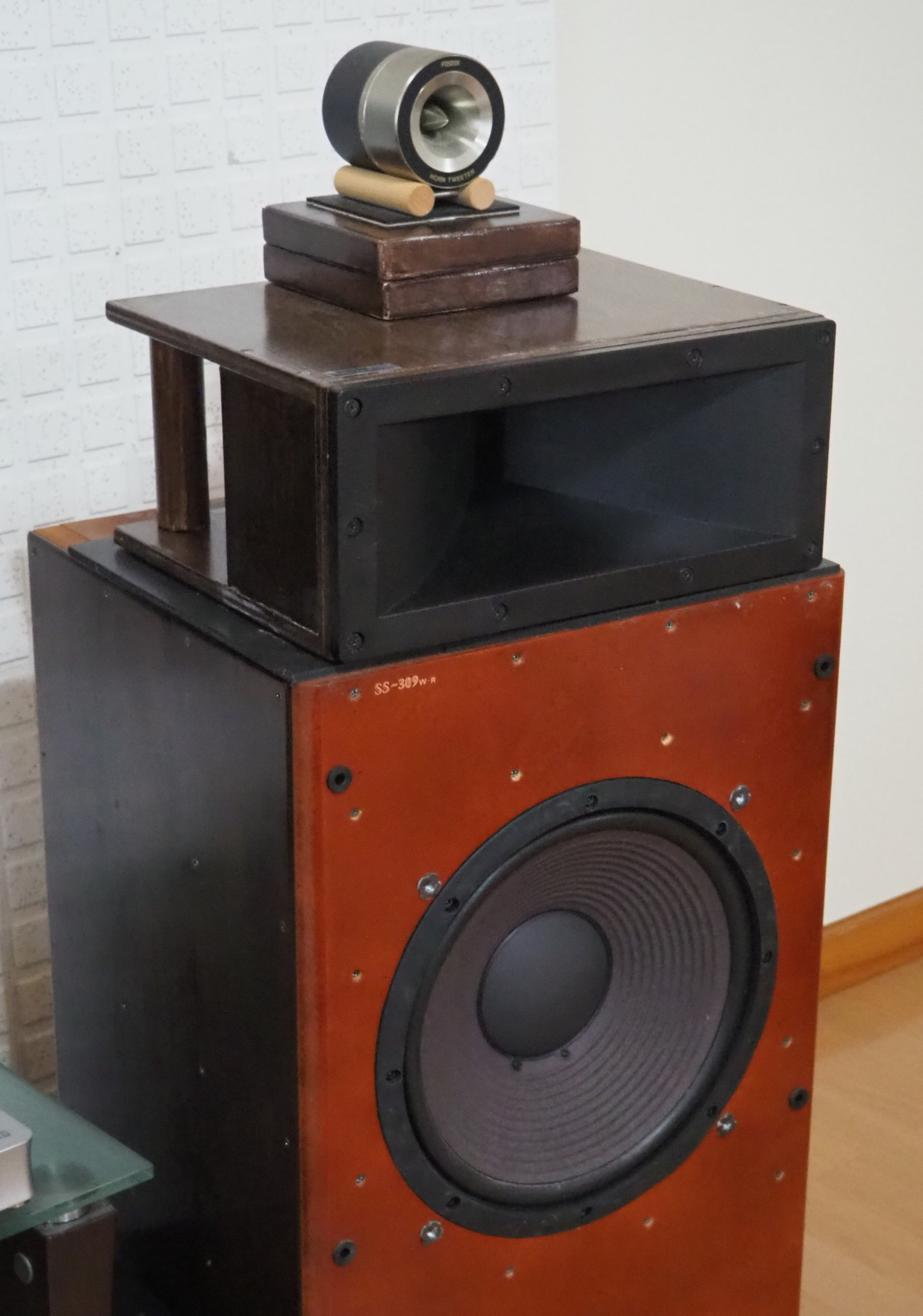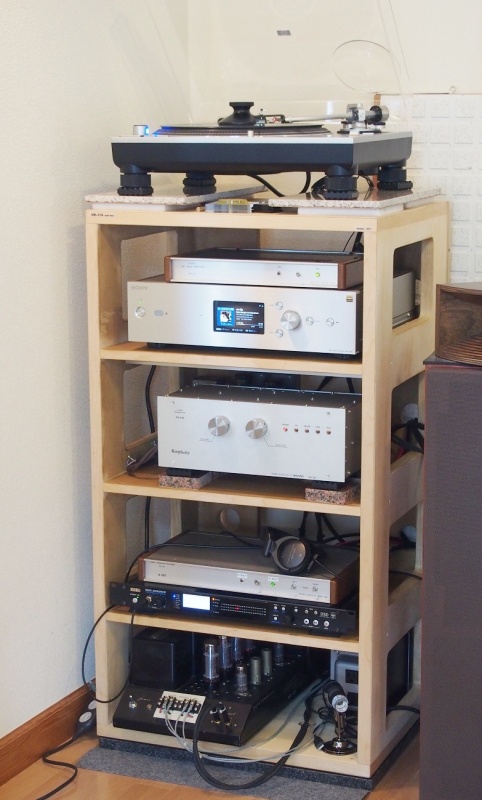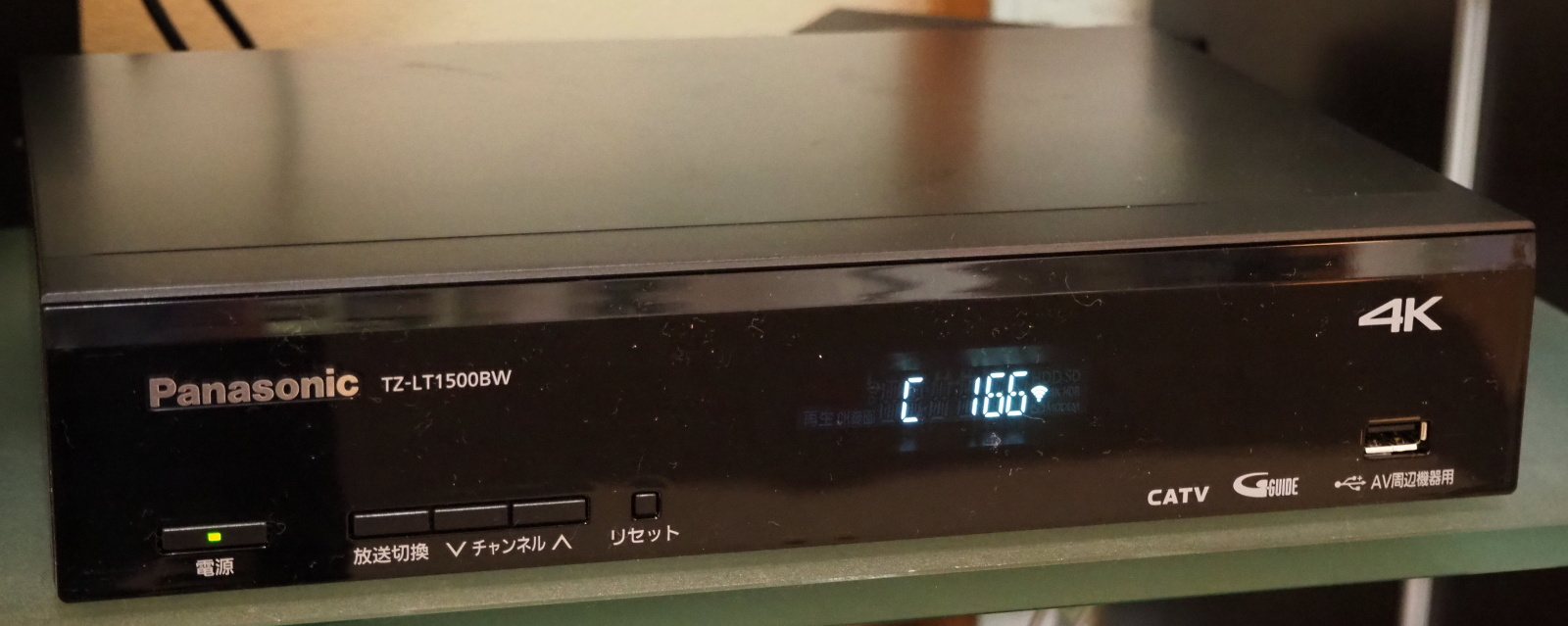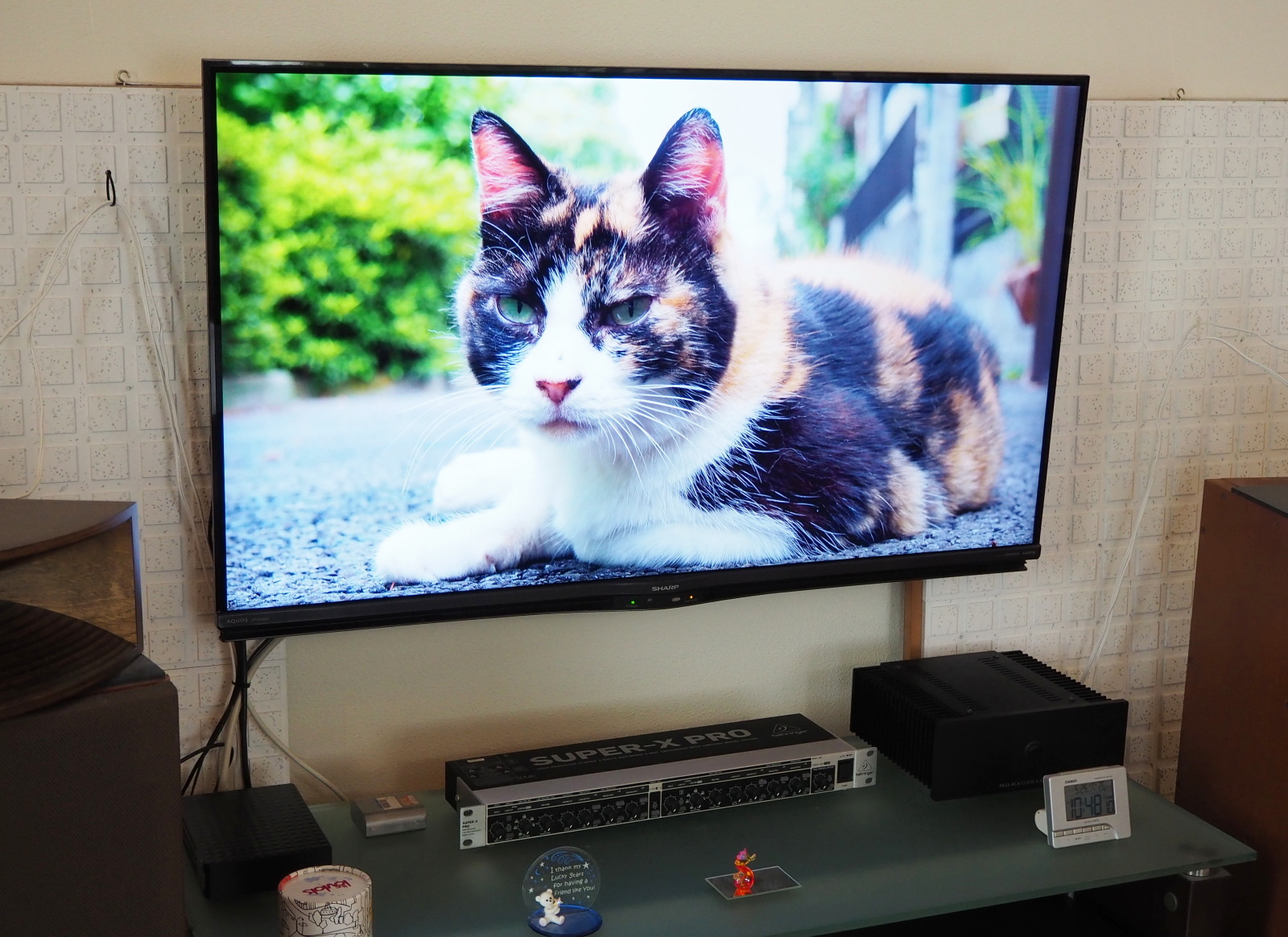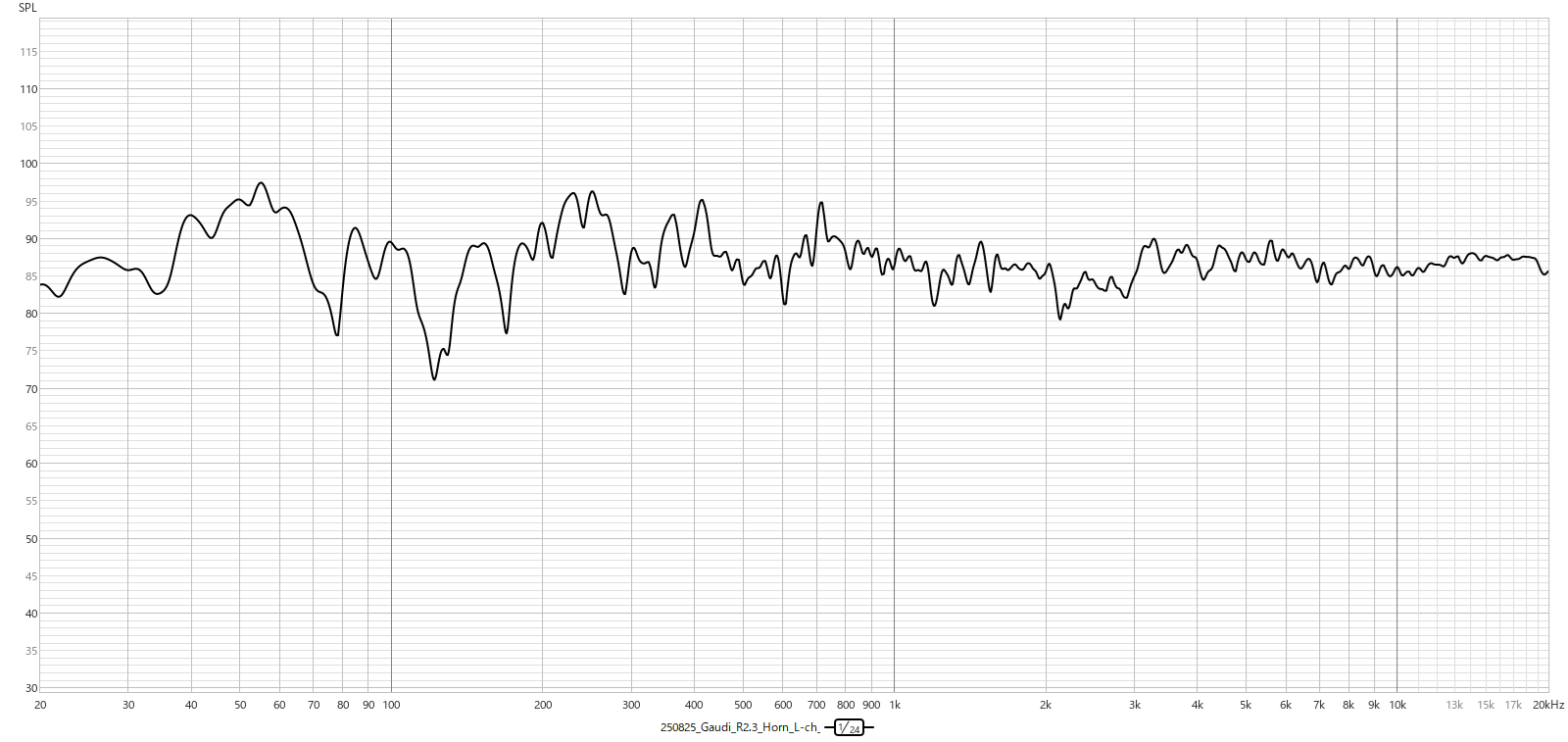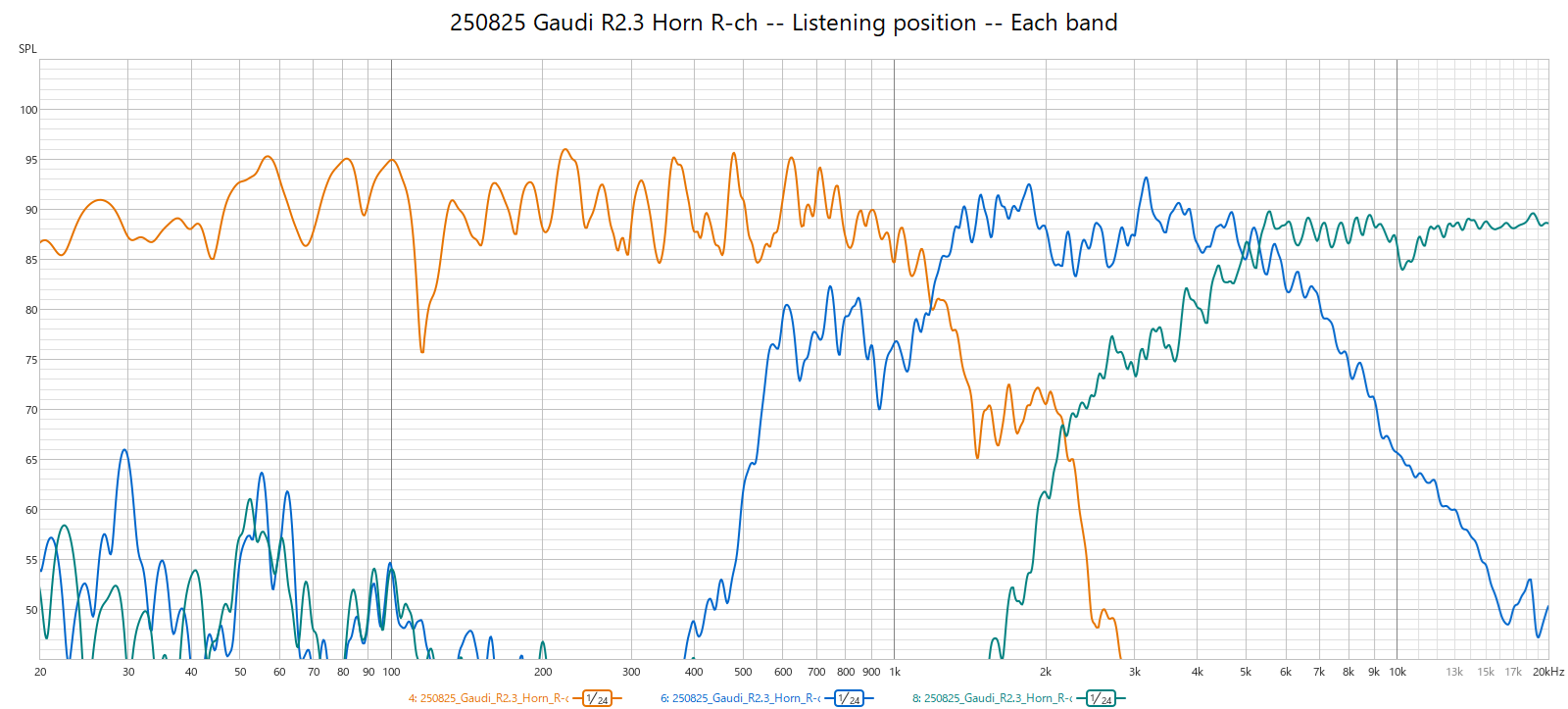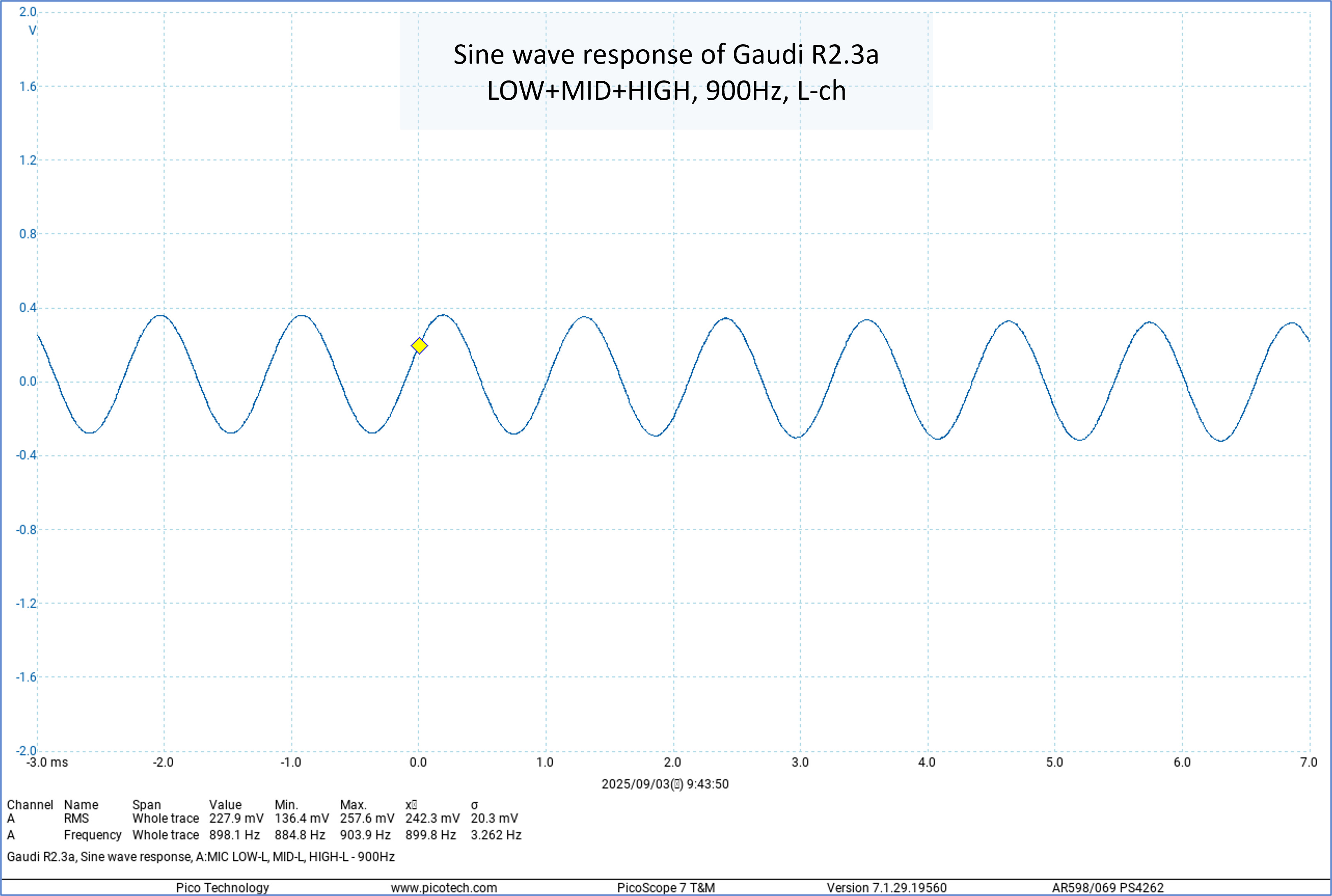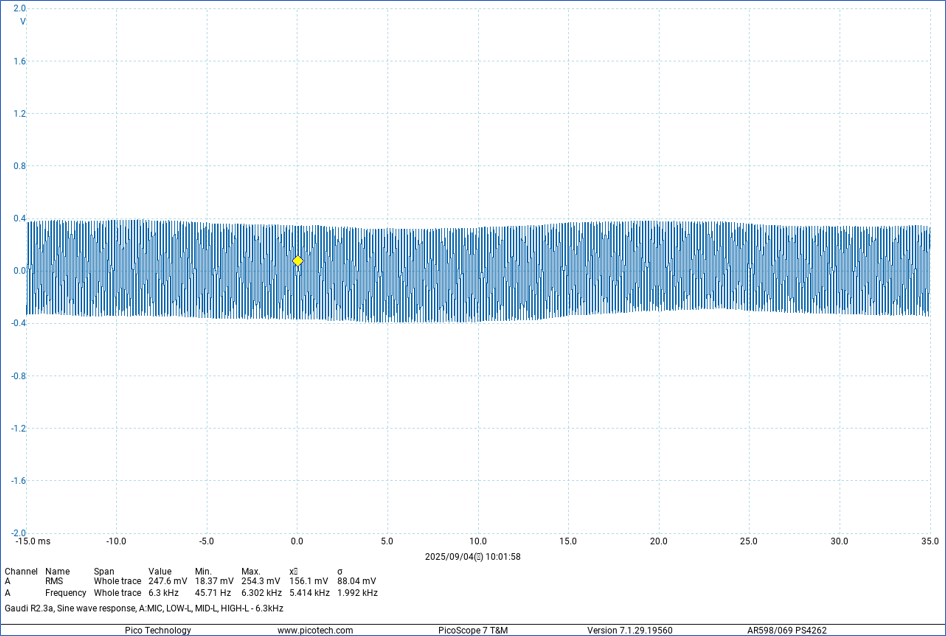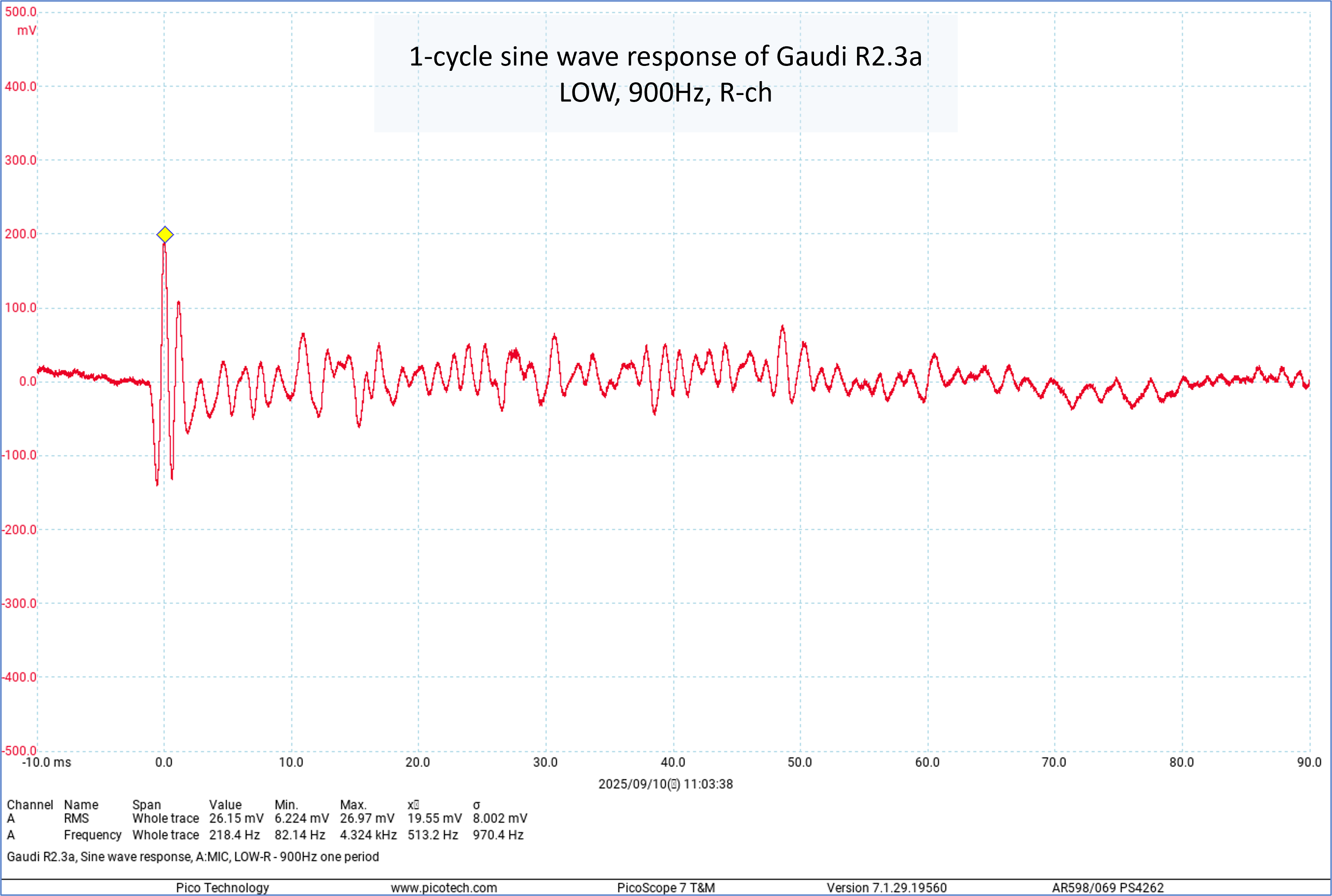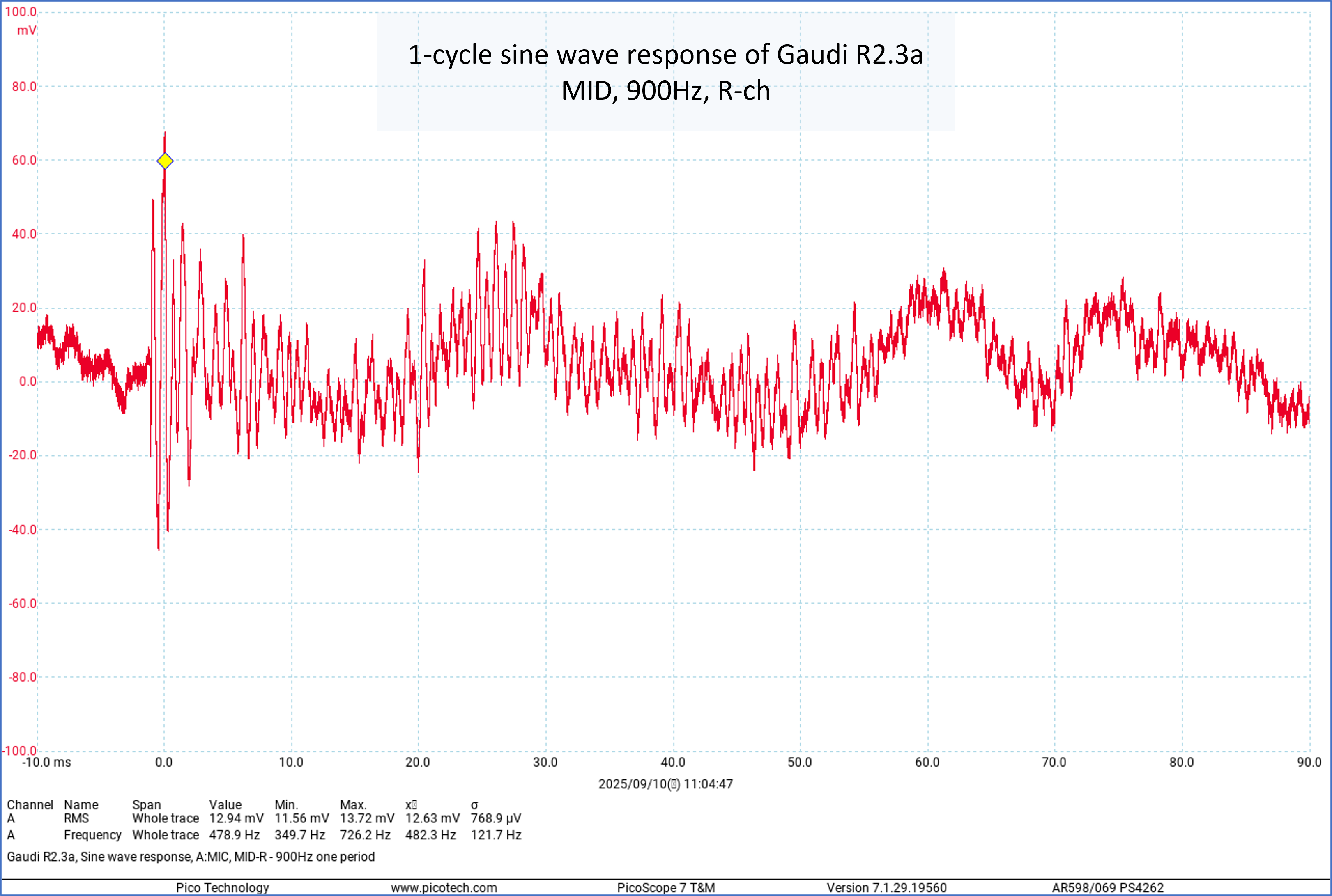System Build
2018/12/29 created
2025/10/04 updated
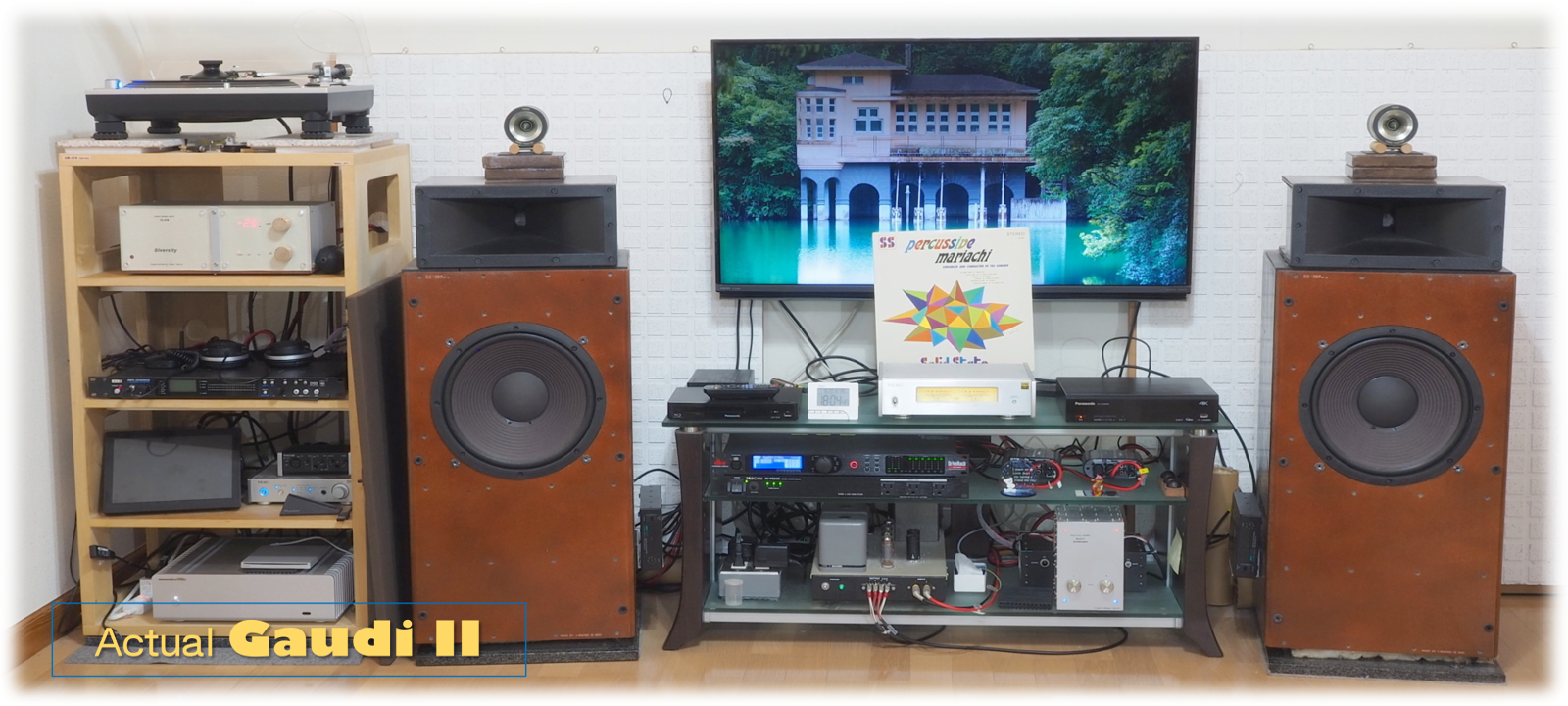
Current revision of Gaudi II: Rev.2.3 (May 2025)
I changed the preamp from PA-210 Simplicity to CC-218 Diversity. CC-218
is the first semiconductor preamp that I built. Unlike the tube preamp
PA-210, which suffered from microphonic noise, CC-218 is free from that
issue and delivers an even higher-resolution sound.
For the past revisions of Gaudi II, click here.
Configuration
The main changes from the previous revision (Rev.2.2) are the replacement of the preamp and the woofer amp. Along with the changes to the amps, the component layout was also revised.
Preamp: PA-210 Simplicity => CC-218 Diversity
Woofer amp: Flying Mole DAD-M100pro => TEAC AP-505
Replacing the preamp greatly improved the sound quality. It became clear that the microphonic noise, which had been a problem with PA-210, was affecting the sound quality more than expected.
Since the perceived sound quality clearly changed, it was expected that the system-level measurement data would also change. Therefore, I decided to redo the system-level tuning.
Because the preamp and the crossover network have different gains in the system design, a new level diagram was created.
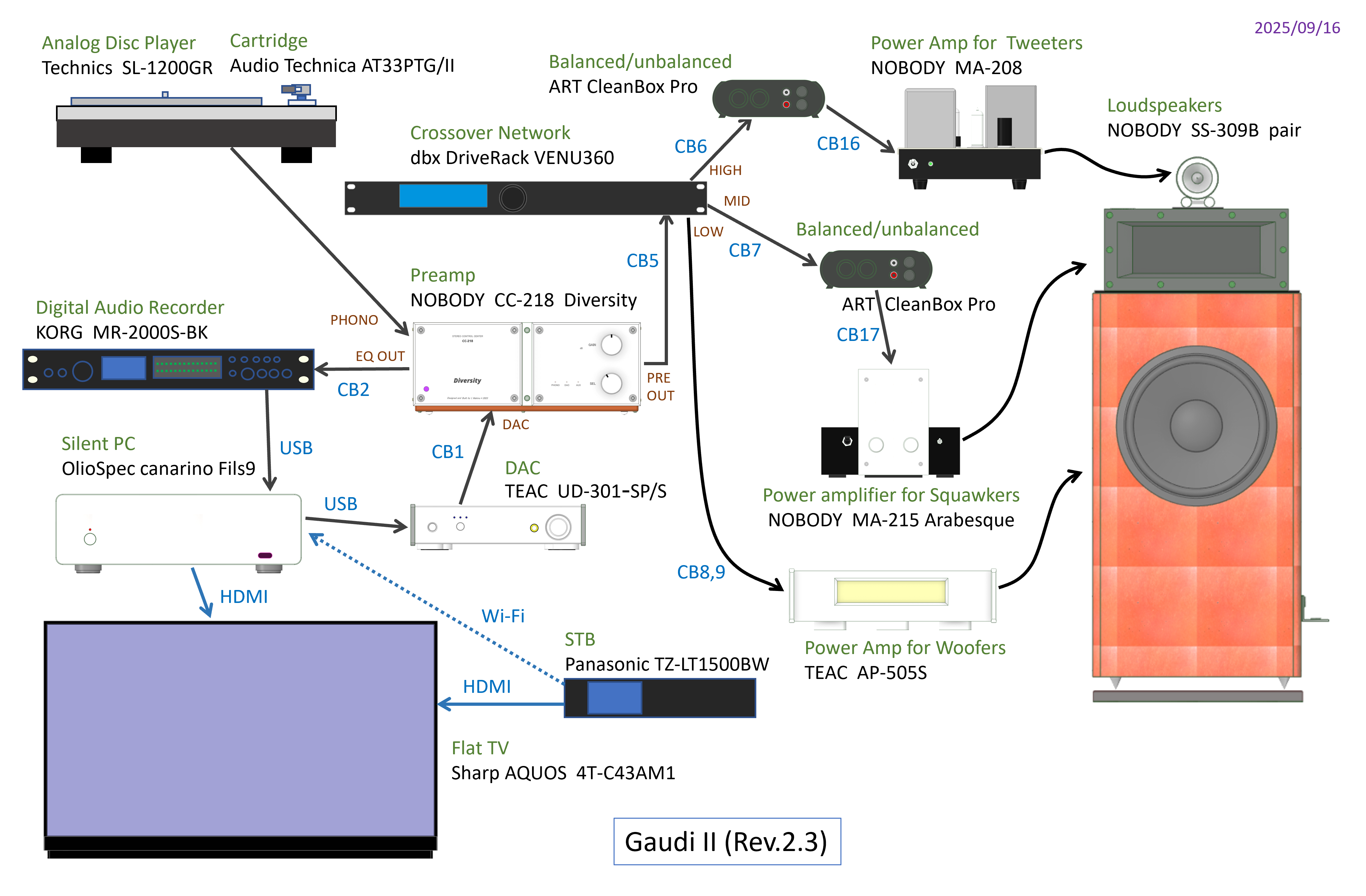 |
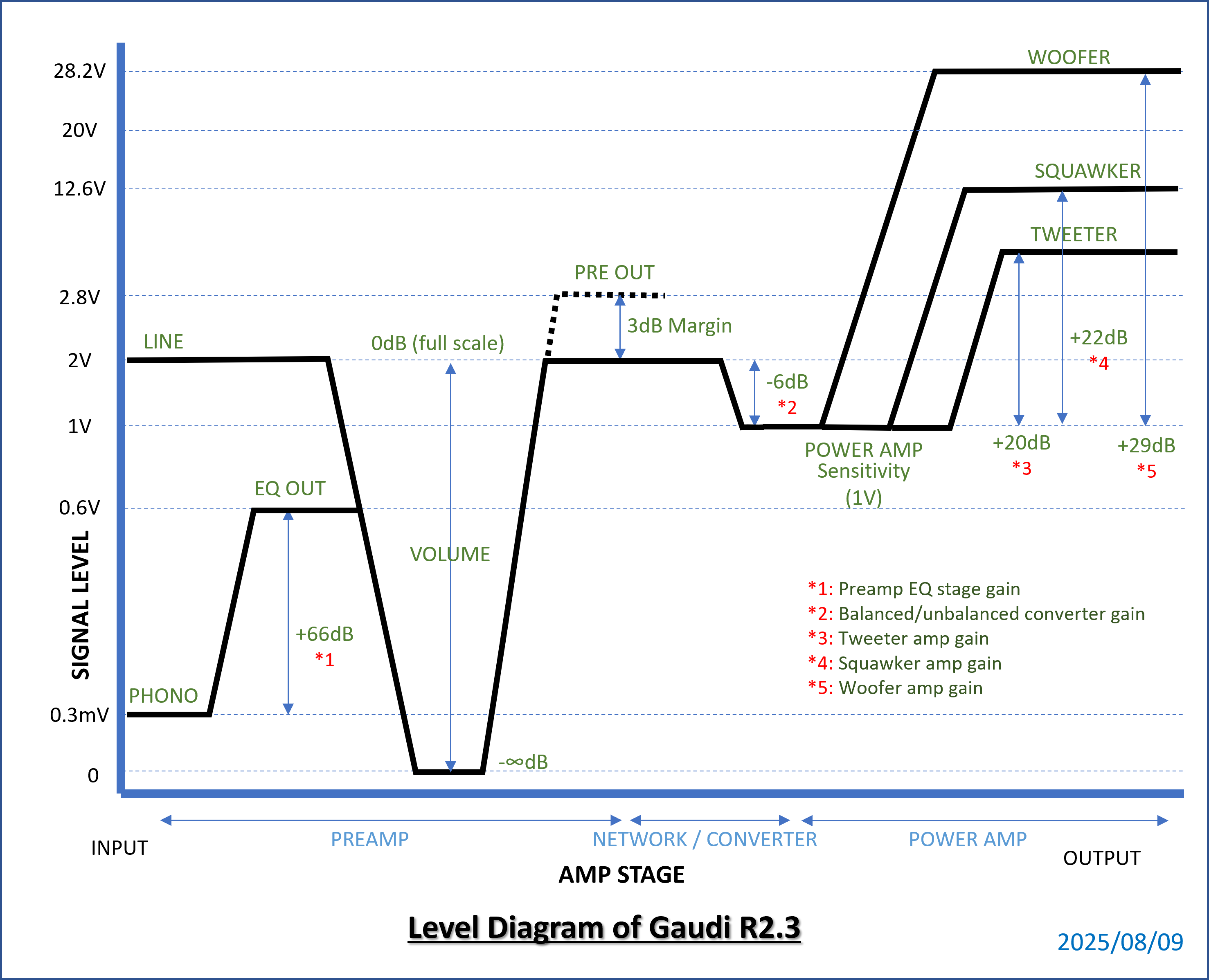 |
| System configuration | Level diagram |
Components in Gaudi R2.3
-
Technics SL-1200GR
Analog disc player
Direct drive turntable
33/45/78rpm
Static-balanced tonearm -
Audio Technica AT33PTG/II
MC cartridge
Microlinear stylus
Output: 0.3mV
Frequency range: 15~50,000Hz -
PC Audio
PC: OlioSpec canarino Fils9
DAC: TEAC UD-301-SP/S
Display: Century LCD-10000UT
BD drive: Pioneer BDR-XU03J
Wi-Fi: Buffalo WI-U3-866DS
Keyboard/mouse: Logicool MK240 -
CC-218 Diversity
Chip preamplifier
Open-loop type phono EQ for MC, gain=66dB
Digitally-controlled analog volume
2 LINE inputs, EQ OUT, PRE OUT
4-ch stereo supported -
dbx DriveRack VENU360
Crossover network (channel divider)
A/D, D/A: 96kHz/24bit
DSP: 32bit floating point
Filter type: BW6-48, LR6-48
Additional features: Time delay, GEQ, PEQ, limiter -
ARTcessories CleanBox Pro
Balanced/unbalanced converter
2ch Bal=>Unbal, Unbal=>Bal
Differential amp type -
MA-208
Power amplifier for tweeter
6BQ5 ULpush-pull
Output power: 10W+10W
Frequency range: 10Hz-50kHz -
MA-215 Arabesque
Power amplifier for squawker
Based on power op-amp LM3886
Output power: 1W+1W(continuous), 20W+20W(peak)
Frequency range: 40Hz-20kHz -
TEAC AP-505
Power amplifier for woofer
Class-D stereo
Output power: 70W+70W (8ohm) -
SS-309B
3-way speaker subsystem
Tweeter: Fostex T925A
Squawker: Classic Pro ED3402+H4401
Woofer: Fostex FW305 -
AR-416 Air
Audio rack
Granite stone base + 5-story wood rack -
KORG MR-2000S-BK
Digital audio recorder
Built-in 128GB HDD
PCM: max 192kHz/24bit
DSD: max 5.6M -
Panasonic TZ-LT1500BW
CATV STB
Terrestrial, BS, 4KBS, CS, dual tuners
Built-in recorder w/ external HD -
SHARP AQUOS 4T-C43AM1
43" flat TV/display
4K LCD panel
Terrestrial, BS, CS
HDMI input x4
Layout
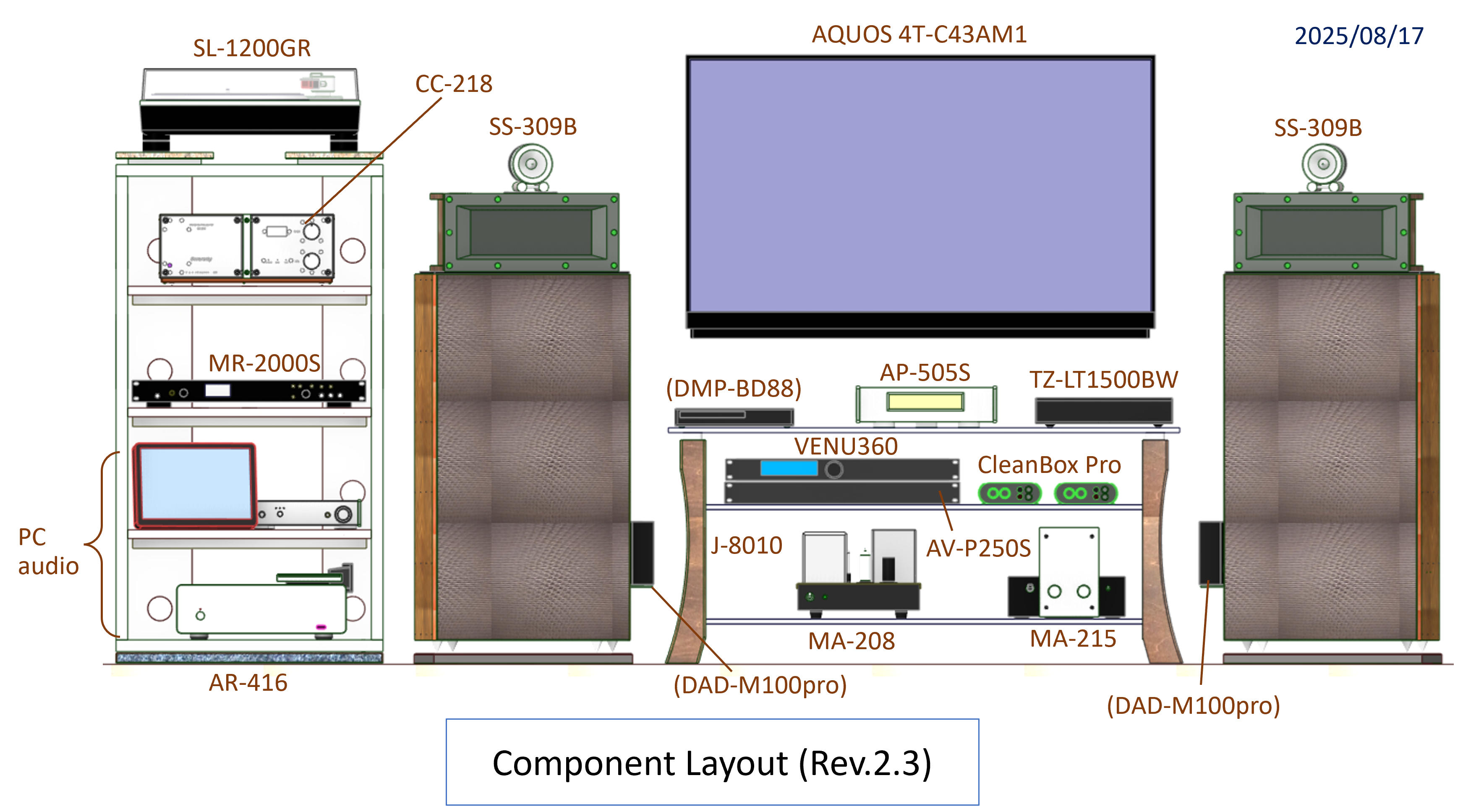
The component layout is as shown on the right (click to zoom up).
The preamp was replaced, changing from PA-210 to CC-218.
Since the MC head amp HA-213 is no longer needed, it has been removed.
The woofer amp was replaced, changing from DAD-M100pro to TEAC AP-505.
The arrangement inside the TV rack J-8010 was changed.
DAD-M100pro and Panasonic DMP-BD88 shown in the diagram are not part of
Gaudi Rev.2.3 system.
The system layout is the same as Rev.2.2. The figires below are those of Rev.2.2.
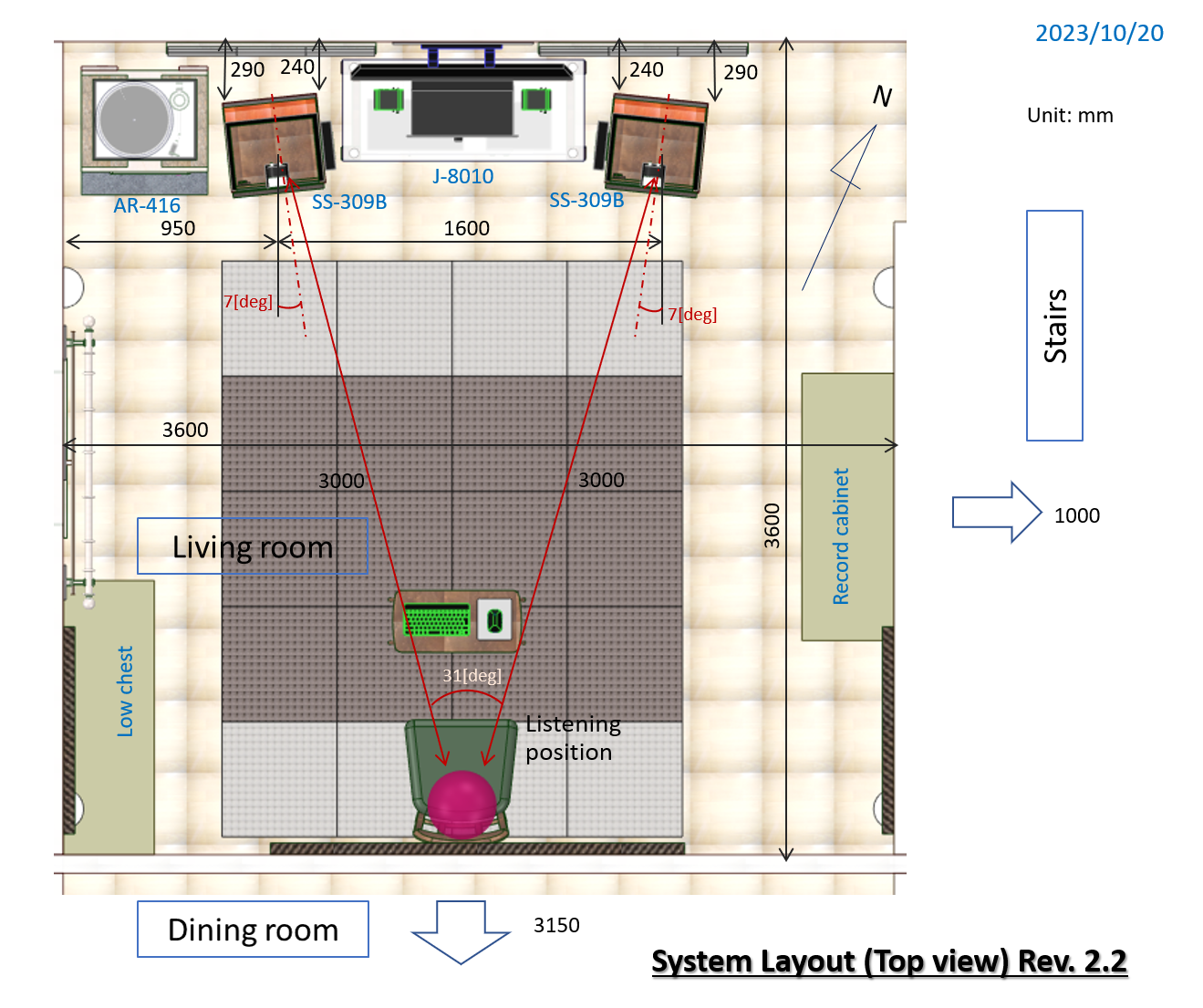 |
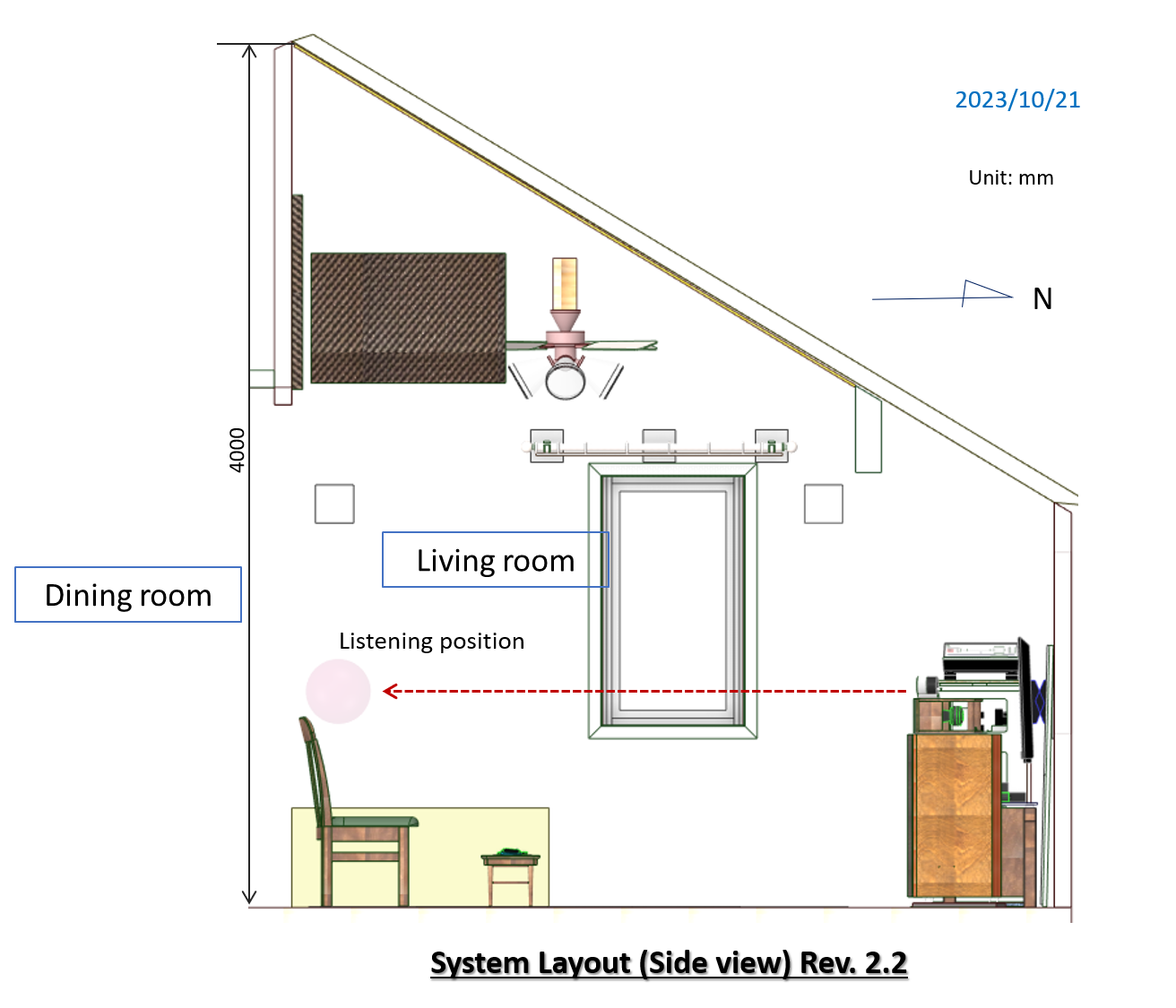 |
Cabling
The cables used in Gaudi R2.2 are as shown in the table below.
I did away with the questionable cables made by 47 at last.
| From | To | RefDes (model#) |
Wire | Length | Sender connector | Receiver connector | Note |
|---|---|---|---|---|---|---|---|
| ADP (SL-1200GR) |
Preamp (CC-218: PHONO) |
Low capacitance unbalanced wire (1-core shielded) |
1.5m | RCA plug | RCA plug | SL-1200GR's accessary Tied with earth wire Stereo pair | |
| DAC (UD-301: LINE OUT) |
Preamp (CC-218:DAC) |
CB18 (Canare RC018) |
1-core shielded | 1.8m | RCA plug (Canare F-10) |
RCA plug (Canare F-10) |
Unbalanced Stereo pair |
| Preamp (CC-218: EQ OUT) |
DAR (MR-2000S: LINE IN) |
CB2 | 4-core shielded (Canare L-4E6S) |
2m | RCA plug (Canare F-10) |
RCA plug (Canare F-10) |
Unbalanced Stereo pair |
Not connected | |||||||
| Preamp (CC-218: PRE OUT) |
Network (VENU360: Analog In) |
CB5 (Canare RC03-B2) |
4-core shielded (Canare L-4E6S) |
3m | RCA plug (Canare F-10) |
XLR pulg COLD-GND |
Unbalanced Stereo pair |
| Network (VENU360:HIGH) |
Bal/Unbal (CleanBox: BAL IN) |
CB6 (Canare EC01-B) |
4-core shielded (Canare L-4E6S) |
1m | XLR jack | XLR plug | Balanced Stereo pair |
| Bal/Unbal (CleanBox: UNBAL OUT) |
Tweeter amp (MA-208:IN) |
CB16 (Canare RC018) |
1-core shielded | 1.8m | RCA plug (Canare F-10) |
RCA plug (Canare F-10) |
Unbalanced Stereo pair |
| Network (VENU360:MID) |
Bal/Unbal (CleanBox: BAL IN) |
CB7 (Canare EC01-B) |
4-core shielded (Canare L-4E6S) |
1m | XLR jack | XLR plug | Balanced Stereo pair |
| Bal/Unbal (CleanBox: UNBAL OUT) |
Squawker amp (MA-215:IN) |
CB17 (Canare RC018) |
1-core shielded | 1.8m | RCA plug (Canare F-10) |
RCA plug (Canare F-10) |
Unbalanced Stereo pair |
| Network (VENU360:LOW) |
Woofer Amp (AP-505: BAL IN) |
CB8,9 (Canare EC015-B) |
2-core shielded | 1.5m | XLR jack | XLR plug | Balanced Mono x2 |
| Tweeter amp (MA-208:OUT) |
Tweeter (T925A) |
OFC AWG20 x 4-core (Canare 4S6G) |
2.7m | Spade terminal Phi=3.5mm (Nichifu TMEX 1.25Y-3.5) |
Spade terminal Phi=8mm (RS Pro 613-9485) |
||
| Squawker amp (MA-215:OUT) |
Squawker (ED3402+H4401) |
OFC AWG20 x 4-core (Canare 4S6G) |
2.7m | Spade terminal Phi=8mm (RS Pro 613-9485) |
Soldered | ||
| Woofer Amp (AP-505:OUT) |
Woofer (FW305) |
OFC AWG20 x 4-core (Canare 4S6G) |
2.4m |
w/o plug | Spade terminal Phi=8mm (RS Pro 613-9485) |
The cable length is from amp to woofer terminal |
*1: The red texts indicate the cables that are changed in Rev.2.3.
For details of the line cables, see the PDF below:
[Design document on line cables (LineCable_Design.pdf)]
Since the woofer amplifier AP-505 has balanced inputs, I’m using those. I replaced the XLR→RCA cables with XLR→XLR ones (CB8, CB9).
I made a discovery regarding line cables.
Line cables (CB1, CB2) made with 4-core shielded wire (L-4E6S) should,
in theory, perform better than ordinary single-core shielded wire. However,
I’ve found through experience that the audible sound quality (SQ) is not
necessarily better with 4-core cables.
When I install CC-218 into the system, I mistakenly used a single-core shielded cable instead of CB1 to connect the DAC and preamp. A few months later, I noticed the mistake and switched to CB1, but I felt SQ had deteriorated. Indeed, with CB1 the sound image was clearer and the localization more stable, yet the sound came across as oddly harsh. When I switched back to the single-core shielded cable, the good SQ returned.
The results left me puzzled, as if the single-core shielded cable were
superior to the 4-core shielded cable. So, I decided to compare the other
4-core shielded cable, CB2, with a single-core shielded cable. CB2 is the
cable that connects the preamp’s EQ OUT to the DAR’s LINE IN. For comparison,
I used CB3.
This time, the result was that CB2 was slightly better. With CB2, the piano
and brass sounded more brilliant. With CB3, it felt as though a faint amount
of noise was added. Overall, CB2 sounded clearer.
When I carried out the listening trial, I recorded all the tunes in DSD
5.6M. The recordings were then down-converted to mp3 320k files, which
I’ve linked below. Each file contains a short excerpt from the first track
on either side A or side B of the LP record.
Classical music, piano solo: V. Ashkenazy,Liszt Recital, London KIJC-9206, 1970/1997, reissued disc (King Super Analog Series)
4-core (CB2): CB2_Liszt_Excerpt.mp3
1-core (CB3): CB3_Liszt_Excerpt.mp3
Classical music, orchestra: Z. Mehta / LAPO, G. Holst; The Planets suite, Decca SXL-6529, 1971, original disc
4-core (CB2): CB2_Holst_Excerpt.mp3
1-core (CB3): CB3_Holst_Excerpt.mp3
Jazz: Count Basie, Basie Jam, Pablo APJ-022, 1973/1997, reissued disc (Analogue Productions)
4-core (CB2): CB2_Basie_Excerpt.mp3
1-core (CB3): CB3_Basie_Excerpt.mp3
Bossa nova, piano and female vocal: Eden Atwood, Waves - The Bossa Nova Sessions, Groove Note GRV1012-1, 2010, 45rpm
4-core (CB2): CB2_Eden_Excerpt.mp3
1-core (CB3): CB3_Eden_Excerpt.mp3
Fusion, brass and percussion: Ted Sommer, Percussive Mariachi, Solid State SS-18012, 1967, original disc
4-core (CB2): CB2_Sommer_Excerpt.mp3
1-core (CB3): CB3_Sommer_Excerpt.mp3
Bluegrass, male chorus: Larry McNeely, Confederation, Sheffield Lab LAB-9, 1978, direct disc
4-core (CB2): CB2_McNeely_Excerpt.mp3
1-core (CB3): CB3_McNeely_Excerpt.mp3
I interpret the somewhat underwhelming sound quality of CB1 not as a shortcoming of the cable itself compared to single-core shielded cable, but as a result of issues within the system. The performance of the squawkers (ED3402 + H4401) is limited, and to compensate, high-order filters are used in the crossover. Because the squawkers already have poor transient response, and the crossover’s transient response is further degraded by the high-order filters, the slightly blurred sound of the single-core shielded cable actually helps mask the squawkers’ shortcomings.
AC Power Supply
The figure on the right shows the AC power connection (click to zoom up).

Previously, I had floated the FG of every component from the earth, but starting with this revision, only the preamp (CC-218) is connected to the earth. This change was made because it was found to slightly reduce residual noise.
System-level Tuning
Replacing the preamp had a greater impact on SQ (sound quality) than expected, so I readjusted the system using the following procedure.
- 1. Measurement of frequency response in quasi-anechoic method, and adjust of the gains of each band, plus compensation with PEQ
- 2. Observe waveforms by using one-cycle sine wave
- 3. Measurement of frequency response and waveforms at the listening position
- 4. Confirmation of SQ by trial listening
As a result, I didn't change the characteristics of the VENU360 filters
(cutoff frequency and attenuation characteristics).
Since they had been carefully adjusted in the previous revision (Rev.2.2),
there was no need to modify them. I experimented with changing the crossover
frequency and setting all filter types to LR12, but this actually worsened
SQ.
The LOW gain was readjusted due to the change in the woofer amplifier (from
DAD-M100pro to AP-505).
In the previous revision, the PEQ was not used, but this time it was employed
because the room is not symmetrical, causing asymmetry in the low-frequency
response between the left and right channels.
The final VENU360 settings were as follows. With this configuration, the
shortcomings of the squawkers (ED3402 + H4401) can be effectively masked.
The outputs of the VENU360’s low, mid, and high ranges are abbreviated
as LOW, MID, and HIGH, respectively. When specifying a channel, they are
noted as, for example, LOW-L or MID-R.
- Configuration: stereo 3-way
- Crossover frequencies: fc1=900Hz, fc2=6.3kHz
- Filter type: fc1:LR24 (4th-order Linkwitz-Riley, 24dB/oct), fc2: BW18 (3rd-order Butterworth, 18dB/oct)
- Input gain: L-ch: -1.4dB, R-ch: 0dB
- Output gain: HIGH: +5.3dB, MID: +1.1dB, LOW: +2.7dB
- Limiter: off
- Polarity: HIGH: normal, MID: normal, LOW: normal
- Phase: 0deg
- Time delay: LOW-L: 0.06msec, LOW-R: 0.06msec
- GEQ: off
- PEQ: L-ch: low shelf 100Hz, +4.0dB, slope=4.2, R-ch: low shelf 49.6Hz, +6.0dB, slope=5.0
- Infrasonic filter: 18Hz (LR12)
- Input clip level: +28dBu (=19.5V)
- Output clip level: +8dBu (1.95V)
- Other settings: default
In the previous revision, the duct of the woofer box of the speaker (SS-309B) was closed, but I have reverted it to a bass-reflex design. This change was made because it turned out that the perceived deterioration in SQ, previously attributed to the speaker, was actually caused by microphonic noise from the preamp.
Regarding the loudspeakers, no changes were made except reverting the woofer box to a bass-reflex design, so no time-alignment adjustments were performed.
Measurements
This measurement was carried out according to the method specified in the
section "Loudspeaker Mesurement" of the supplemental information
"Method 2: Measurement Methods".
In the quasi-anechoic measurement, the distance between the woofer and
microphone in the near-field measurement is d=13mm, and the merge frequency,
fm=460Hz. The window width of impulse response is -2.0 ~ +2.21msec.
Frequency response measured in the pseudo-anechoic method:
The level of LOW (below 900 Hz) is somewhat elevated and not flat, but
this reflects the adjustments made so that the response at the listening
position becomes flat.
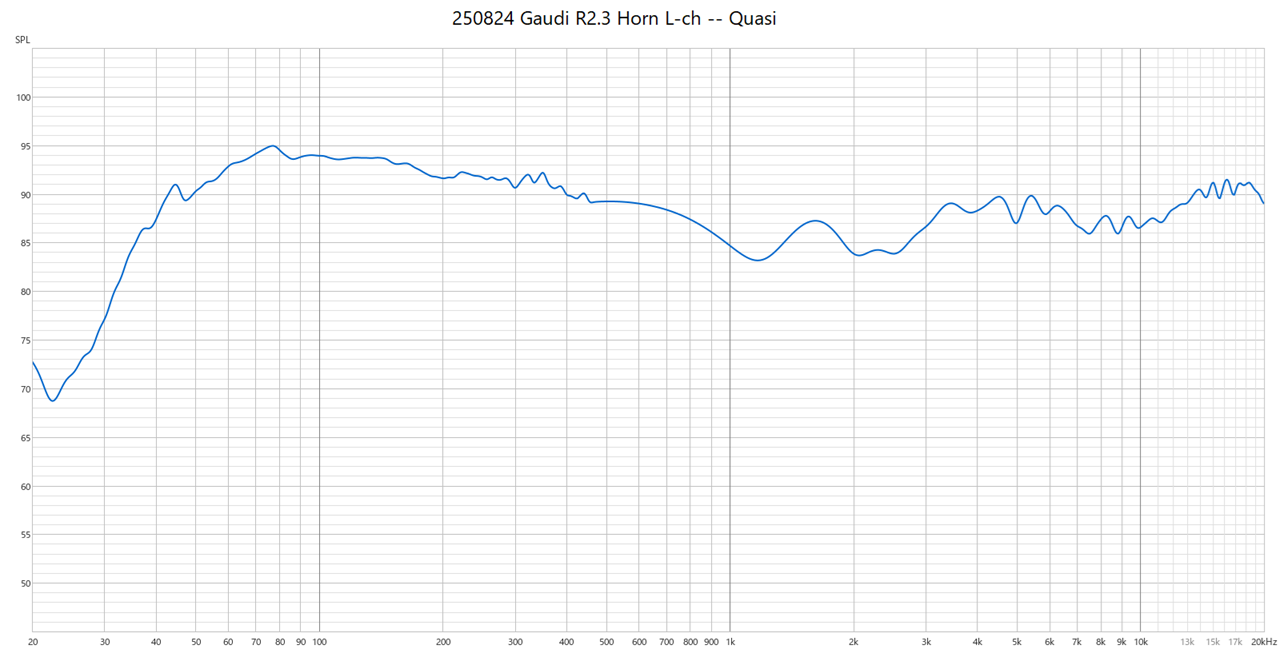 |
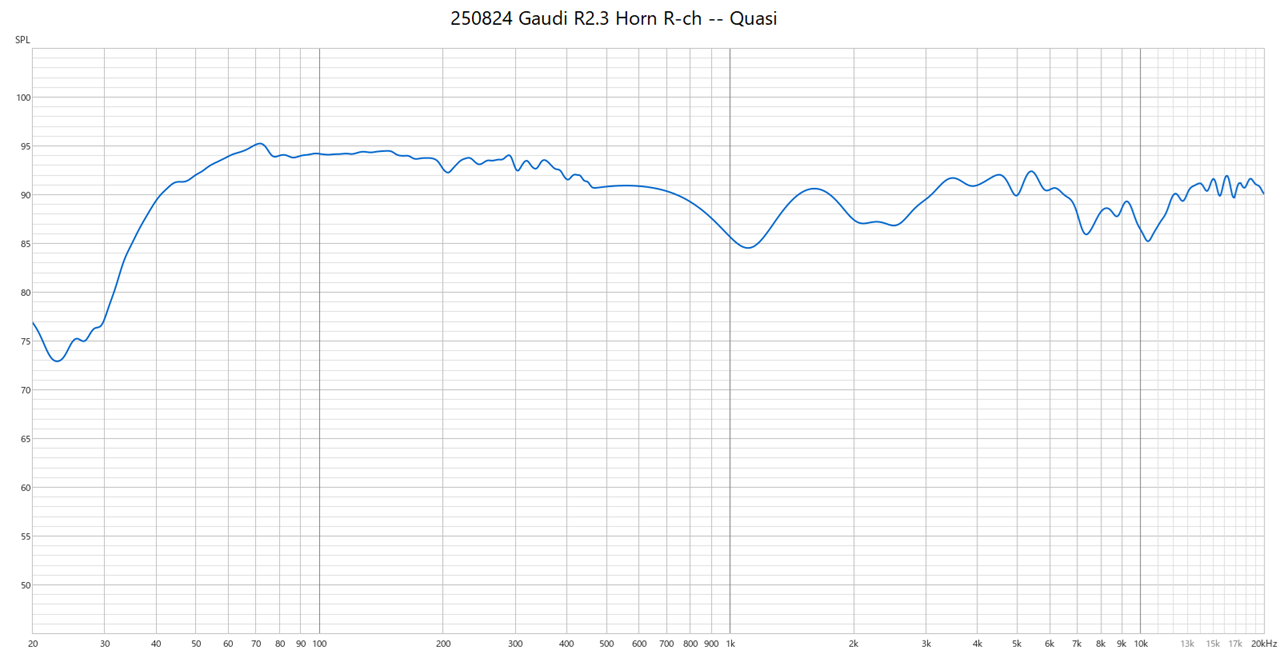 |
| Quasi-anechoic Frequency Response -- L-ch Though it seems LOW is boosted, the response becomes flat at the listening position |
Quasi-anechoic Frequency Response -- R-ch Almost the same as L-ch |
Frequency response at the listening position
As you can see in the figures below, the responses are flat at the listening
position.
While bass diffuses, treble doesn't because of their directivity. The level of the response in LOW is almost the same as that of MID and HIGH, unlike the uneven frequency response of the speaker itself.
Waveforms
I observed and saved many waveforms. Here I present some essential ones
among them.
In the case of the continuous sine waves, clean waveforms can be observed
even at the crossover point.
However, the sine waves consisting of only a single cycle, which are close
to an impulse, do not produce very clean waveforms. With the current speakers
(SS-309B), I think this is about the limit.
Trial Listening
I did trial listening by using 2xHD "Audiophile Speaker Set-up" as usual. The format is DSD5.6M (DSD128). In addition, I used my favorite LPs, which I have listened to countless times.
Room Acoustics
The room acoustics hasn't been changed since Rev.2.03. I continued to use the acoustic goods I had employed for Gaudi with some exceptions.
Self-evaluation
By replacing the preamp with the semiconductor amplifier (CC-218), SQ (sound
quality) improved surprisingly. Even with the previous revision, I felt
it was the best sound quality in Gaudi’s history, but this time I achieved
an even greater improvement.
In particular, the spatial reproduction has improved, making the sound
of classical orchestra much more captivating.
By adding a remote control feature to the preamp and changing the component layout, the ease of use has improved significantly.
Sound Quality
When I replaced the preamp from PA-210 to CC-218 and played a record for the first time, my initial impression was that the resolution had increased considerably. The sound image became sharper, and the localization more stable.
Previously on this website, I wrote that I “do not seek pinpoint localization,” but I now retract that statement. I have realized that when the sound image is accurately localized and stable, listening becomes truly pleasant. Recently, the spatial reproduction has actually become the most important checkpoint for evaluating sound quality. In comparison, I have become more tolerant of slight differences in timbre.
I realized that PA-210, which I had thought was quite a good preamp, is
actually a poor amplifier.
PA-210, being a tube preamp, picked up microphonic noise. In fact, when
listening with headphones, it is not that much inferior to the CC-218.
However, when played through speakers, a clear difference becomes apparent.
I often hear some opinion that tube amplifiers have inferior characteristics
compared to semiconductor amps, but their sound quality is good. The “characteristics”
referred to here are probably electrical characteristics, but I think that’s
not quite accurate. The electrical characteristics are at a sufficient
level for an audio amplifier. Tubes are inferior not in electrical characteristics,
but in mechanical characteristics — that is, they are sensitive to vibration
and pick up microphonic noise.
When I built PA-210, I struggled with microphonic noise. I implemented
various countermeasures and thought they made PA-210 acceptable, but in
the end, it was still no good.
In the previous revision, I felt a “horn-like coloration” from the squawkers
(ED3402 + H4401) of SS-309B speakers, but I no longer perceive that.
I realized that what I had assumed was a limitation of the speakers or
the room acoustics, preventing sound quality from improving, was actually
due to the preamp. Now, treble sounds clear and beautiful. My wife and
several friends have also commented that “the treble is incredibly beautiful.”
That said, the squawkers are not without issues. They are simply low-fidelity
units. I made sure that their weaknesses would not become apparent through
system-level tuning.
The continuous tones produced by string and wind instruments are indeed
very beautiful, but upon closer listening, the percussive sounds of piano
and drums seem somewhat lacking in sharpness. Horn speakers have poorer
transient response compared to direct-radiator speakers (this is my personal
view; I could be mistaken), which explains why they sound this way.
By replacing the woofer amplifier from Flying Mole DAD-M100pro to TEAC AP-505, the noise coming from the woofers has become virtually inaudible. This has also contributed to a very positive impression.
In the previous revision, I concluded that the lack of depth in the soundstage was due to the low resolution of VENU360 crossover. I still feel this to some extent, but it no longer seems as serious. Currently, the component I consider most problematic is the woofer. I would like to use more modern speaker units. However, the characteristics of low frequencies are strongly influenced by the room, and I have not yet performed sufficient room tuning. My priority now is to properly carry out room tuning first.
Please refer to the webpages on CC-218 and SS-309B:
Review of C-218
SS-309B
Appearance
I designed CC-218 to fit into the audio rack AR-416 (at least that was
my intention), and I think it worked out that way. Since CC-218 has a built-in
phono EQ dedicated to MC cartridges, the MC head amplifier HA-213 is no
longer necessary. After removing HA-213, the audio rack (AR-416) looks
tidier.
On the other hand, the TV rack still feels cluttered. I plan to make it
look neater in the future.
I bought the woofer amplifier (TEAC AP-505) brand new, so I could choose its color between silver and black. If I had chosen black, it would have matched the color of the other components, but for some reason I went with silver. When I looked at the catalog photos, the silver version looked really cool, so I ended up choosing it. As a result, the AP-505 stands out a bit.
| Audio Rack AR-416 The preamp PA-210 is replaced with CC-218, and MC head amp HA-213 is discarded |
| AP-505 Stands Out a Bit on TV Rack It's a little messy in the rack. I want to hid the cables. |
User-friendliness
Since the operating specifications of CC-218 are completely tailored to
my preferences, I have absolutely no complaints about usability of Gaudi
R2.3.
Spec of CC-218
Review of CC-218
Since the preamp now also draws its power from the power distributor like the other amps, the power to all the amplifiers can be turned on and off using the switch on the TASCAM AV-P250S power distributor.
Other aspects
Since CC-218 has a 4-channel stereo feature, I occasionally enjoy 4-channel
records. I currently own only four of them, but I plan to buy more if I
find used 4-ch records.
For the rear speakers, I use the SS-312A from the second system Kinglet,
and for the power amplifier, I use an ELEGIANT (an inexpensive Chinese
amp). It’s not a perfect 4-channel setup—more of a “4-channel approximation,”
you could say—but it does have a definite effect. Sounds that should be
positioned at the rear can indeed be heard coming from behind. It’s quite
enjoyable.
| Playing 4-ch Record Rear speakers: SS-312A, Rearamp: ELEGIANT |
SS-312A and ELEGIANT |
Wrap-up
I knew that microphonic noise from the tube preamp could degrade the system-level
sound quality, but I had underestimated its impact. I did not expect that
simply replacing the preamp with a solid-state amplifier would result in
such a significant improvement in sound quality.
I was shocked to realize that the factors I had previously blamed on the
speakers or the crossover were actually caused by the preamp. Even after
more than half a century of working with audio, I am painfully aware that
there is still so much I don’t fully understand.
In any case, the sound quality has improved, and usability has been greatly enhanced, so I’m very pleased. However, since it hasn’t yet reached the ultimate level of sound quality, I want to focus on designing new speakers and fine-tuning the room as soon as possible.
